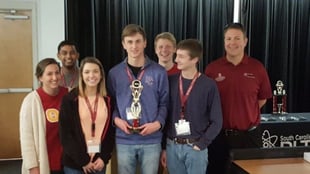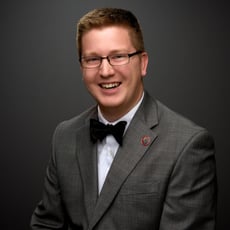Jeanne Oiler is a TechEd/PLTW teacher and TSA-VEX Club advisor at University High School in Morgantown, West Virginia.
As teachers, we supply the information to make our students better problem solvers and critical thinkers. However, knowing if the students can carry that into the world around them sometimes is the challenge. It is for that reason I have embraced student organizations and competitive teams such as TSA (Technology Student Association) and VEX Robotics. Both give me insight I previously did not have so I might see what I have gotten right and what I need to revisit. Think of it as a checks and balances for the key concepts you have been trying to ensure your students have grasped.
TSA – as its motto states – was established to foster personal growth, leadership, and opportunities in technology, innovation, design, and engineering. Students learn to apply STEM concepts through co-curricular activities and competitive events. At the high school level, students may participate in competitive events such as CAD 3-D Engineering – just like we do in Introduction to Engineering Design (IED) – and CAD 2-D Architecture – just like Civil Engineering and Architecture (CEA).
With over 30 events, there is truly something for everyone that matches nearly all the curriculum offered in PLTW. The organization also promotes community service and leadership, which is always a bonus.
When we start talking VEX Robotics, I like to think of it as an extension of Principles of Engineering (POE). Each year, VEX proclaims a new contest for student teams to tackle. Remember all those portfolio items we started pushing in IED? Well, here they are used to their full extent as teams brainstorm, design, test, and communicate the results in an all-out war to build the best robot for this year’s challenge. Students are not only required to build their robots but also program it to run both driver-controlled and autonomous. VEX also offers an entire robotics curriculum for teachers to utilize if they choose. These lessons (from gear ratios to programming) even include resource material including videos.
I don’t necessarily push one club/organization over another – these are just the two that work best for me and my program. There are dozens of different groups that support our curriculum; it just takes looking to see what will spark the interest of your students and you.
It does require you to surrender your time. My school has a built-in club day once a month. However, meeting for a single class period once every 30 days did little in allowing the students to truly apply themselves to the task at hand. For that reason, we include after-school meetings for two to three hours. We do that once a week on the onset and bump it up to twice a week as the submission/competition dates draw closer.
For me, combining these particular competitive clubs with my curriculum has been a true win-win for all involved. My students are excited to transform what we do in class into the hands-on projects of both clubs.
Not ready to jump into the club scene? No problem – there are activities that allow your students to flex their PLTW muscles such the Verizon Innovative App Challenge, the Kavli Science Video Contest, The DuPont Challenge, and the Team America Rocketry Challenge, just to name a few.
PLTW’s blog is intended to serve as a forum for ideas and perspectives from across our network. The opinions expressed are those of this guest author.

